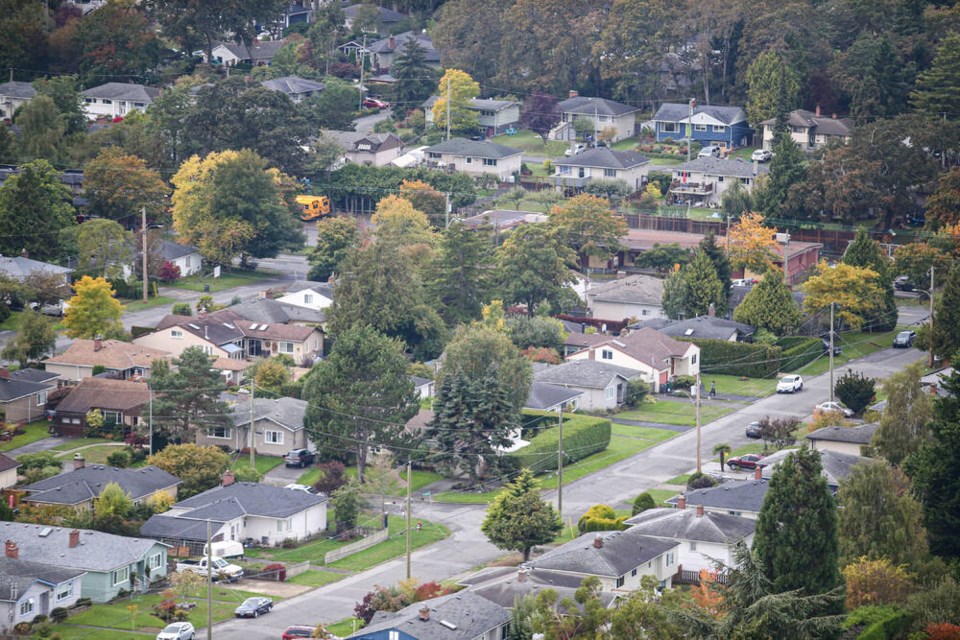Victoria’s housing strategy will get a distinctly average grade Thursday when the city’s annual review of the three-year plan is delivered to council.
The report makes clear the city had mixed results over the last year, the second year of a strategy that was implemented in 2019 to increase the supply and diversity of affordable and market housing.
It detailed the continued struggle with affordability, soaring home prices, rising rental and construction costs, record migration to the province and the spectre of inflation.
While the review noted the city made some progress on the rental front, it gained little ground in establishing more housing for young families, couples, singles and empty nesters who want to stay in Victoria.
“I think the bottom line is there is not enough housing for the people who already live here and the people who want to move here,” said Mayor Lisa Helps. She said while council may have approved more rental housing than ever before in 2021, the vacancy rate is still “heading in the wrong direction.”
“It’s a pretty dire situation for all forms of housing, and then of course the missing middle one is particularly concerning,” she said.
Missing-middle initiatives aim to increase the number of options between single-family houses and multi-storey apartment buildings — for example, townhouses and houseplexes.
In Victoria, the goal is to amend bylaws, land-use procedures and official community plans to permit infill, houseplexes and corner townhouses in some neighbourhoods. Where zoning currently allows for single-family homes, it would allow duplexes, tri-plexes and four-plexes as well as townhouse projects on assembled land.
Helps said the review shows the city only issued 34 building permits for that kind of housing in 2021, even though it set a target of issuing as many as 150 each year. “That’s worse than dire,” she said. “If we want families in our city, we need to build housing for families in our city, it’s really that simple.”
Council has scheduled a public hearing on the missing-middle initiative for Aug. 4.
The city has made some progress with other forms of housing, Helps said.
In 2021, 492 permits were issued for new market rental homes, ahead of the annual 300-unit target, while 394 net new affordable non-market homes have been approved, ahead of the target of 350.
The review shows another 348 affordable homes are proposed, 234 await permits and 551 are already under construction.
Among other achievements noted in the report: Creating new processes to support the rapid deployment of affordable housing; signing onto the Greater Victoria Housing Security Fund and Rent Bank, which provides housing support services and interest-free loans of up to $3,000 to renters experiencing temporary financial emergencies; hiring a tenant assistance planner; and helping to relocate 157 tenants displaced by property redevelopment.
Helps, who isn’t planning to run again, said she hopes the review will serve the next council — to be sworn in this fall — as a guide for the next phase of its housing strategy.
“And I think also as a guide for the provincial and federal governments that need more housing to be built,” she said, warning housing starts could slump in the coming months due to interest-rate hikes and supply-chain issues.
“I think if it’s dire now, it’s going to get worse and if I were the federal and provincial governments, that’s a really good time to make investments and step in even more significantly than they have.”
Helps said if the city wants to make room for everyone in the community, it will have to come to terms with a bit more density in neighbourhoods, a bit more height along main arterial roads.
>>> To comment on this article, write a letter to the editor: [email protected]



